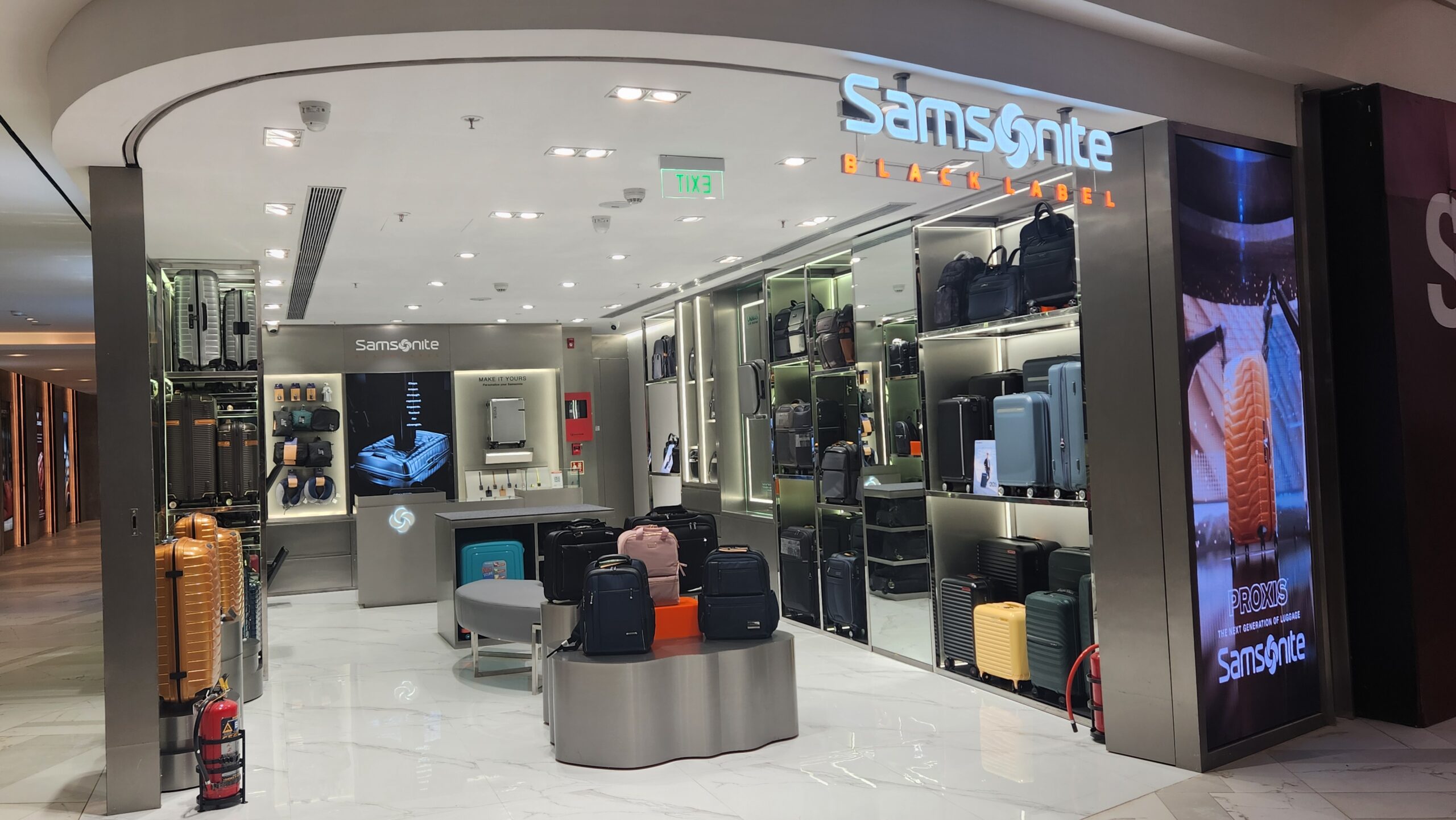From his early days in consumer durables to creating new distribution channels for a global brand, Samsonite’s NP Singh’s journey illustrates how challenges, when embraced strategically, can lead to pioneering success…
Few professionals leave a mark that goes beyond a single brand to redefine an entire industry. Narendra Pratap Singh, Director – Retail at Samsonite, has done just that, with a career defined by vision, perseverance, and innovation that transformed India’s luggage sector. From his early days in consumer durables to creating new distribution channels for a global brand, Singh’s journey illustrates how challenges, when embraced strategically, can lead to pioneering success.
The Early Years: Building a Foundation
NP Singh began his professional career in 1983–84 with Glaxo’s consumer division. While the role gave him valuable exposure, he quickly realised that the pace of FMCG marketing and its long promotional cycles did not align with his aspirations. Seeking a faster-moving and more tangible industry, he shifted gears to the consumer durables space.
His next opportunity came with Pressure Cookers and Appliances Ltd. (PCA), where he worked on innovative infrared cooking gadgets. Singh quickly rose to lead his team and eventually moved to Hawkins Cookers Ltd., where he handled distribution through CNFs (clearing and forwarding). This phase gave him a solid grounding in trade relationships, and zonal leadership as he rose to Zonal Sales Manager for Maharashtra, Goa, Gujarat, and Madhya Pradesh.
This strong market reputation eventually paved the way for the defining chapter of his career; his association with Samsonite.
Entering Samsonite: The Early Struggles
When Singh joined Samsonite, he was tasked with leading the Western Zone, which included Madhya Pradesh, Gujarat, Goa, and Maharashtra. However, unlike Hawkins or Glaxo, Samsonite’s brand equity in India was still nascent. Despite being a global leader in travel goods, it struggled to establish a foothold against entrenched domestic brands that had ruled the market for decades.
The initial challenges were daunting:
- Samsonite’s products were priced nearly double compared to competitors.
- Multi-brand outlets demanded credit facilities, which an MNC like Samsonite could not extend.
- Competitors offered higher margins and encouraged deep discounting, eroding Samsonite’s positioning.
- Multi-brand outlets often indulged in pseudo pricing, selling at discounts that undercut brand value.
As Singh recalls, “Everywhere we were falling short of the base to create a platform for our brand to get placed. The market share we estimated was not coming through, and it created unrest within the organisation.”
Turning the Tide: Seizing Opportunities
Recognising a gap in the market, Singh proposed a bold strategy: moving away from traditional multi-brand outlets networks to establish a direct consumer connection through shop-in-shop formats within department stores. At the time, department stores like Shoppers Stop prioritised categories such as cosmetics, apparel, and jewelry, where ROI per square foot far exceeded that of luggage. Convincing them to allocate space for bulky suitcases was a formidable challenge, yet Singh’s persistence paid off, making Samsonite the first luggage brand to secure prime department store presence in India.
This move not only enhanced visibility in premium retail environments but also positioned Samsonite alongside lifestyle products rather than purely utilitarian goods. Complementing this retail innovation, Samsonite introduced several design-first breakthroughs, including the first wheeled luggage and the use of high-grade materials like polypropylene, polyamide, and ABS—previously limited to heavy industries. These innovations, combined with meticulous engineering and a strong focus on design, ensured that Samsonite products remained aspirational, functional, and consistently connected with consumers.
The Retail Revolution: Malls and Beyond
The next breakthrough came with the rise of shopping malls in India. Singh saw this as the perfect platform to elevate Samsonite’s image. He spearheaded the brand’s entry into Crossroads (SOBO Central) at Haji Ali, India’s first shopping mall. This was followed by the first exclusive luggage store in Inorbit Mall, Malad (2004).
Here too, Singh’s strategy was unconventional. Instead of being slotted into generic “accessory” zones, he insisted on positioning Samsonite alongside high-end watch boutiques like Ethos, believing that premium luggage complemented luxury timepieces. Developers were skeptical, but Singh’s conviction eventually won them over.
These moves not only gave Samsonite visibility among India’s growing middle and upper-class consumers but also redefined luggage retailing in the country.
Building Franchise Success (Mid-2000s)
Once Samsonite had established its own stores and shop-in-shop presence, Singh turned his attention to franchise partnerships. Instead of relying on traditional multi-brand outlets, he strategically approached non-traditional outlets, persuading them to convert spaces into dedicated Samsonite stores.
This ensured that Samsonite could maintain strict control over branding, pricing, and customer experience—critical to its premium positioning. The model proved highly successful, delivering value to franchisees and strengthening Samsonite’s reach.
As Singh explains, “Whatever we wanted them to implement to connect with the customers was happening exactly. Franchisees were happy with business, and the company was extremely satisfied with the overall growth.”
Breaking New Ground: Airports as Retail Hubs
Perhaps Singh’s most audacious and game-changing strategy was bringing Samsonite to the airports. The idea initially met with strong resistance. Airport authorities questioned the logic: “Passengers come with their bags already packed, hence who will buy luggage here?” On paper, the concern was valid. Yet Singh believed airports represented the most natural retail environment for travel goods.
After multiple rejections, Singh finally secured space at one airport, which was a small 25 sq. m. store. The results were spectacular. Sales exceeded expectations, and Singh was able to use this data to convince previously reluctant airports to grant space.
This move created a new retail channel in India, with Samsonite pioneering airport retail for luggage. Soon, competitors followed suit, but Samsonite retained the first-mover advantage.
Creating a New Distribution Channel
By the late 2000s, Singh had built a completely new distribution architecture for Samsonite in India; from shop-in-shops to malls, franchises, and airports. Each initiative was a first for the luggage industry and expanded Samsonite’s footprint far beyond what traditional multi-brand outlets networks could have achieved. Singh personally oversaw every aspect location scouting, feasibility studies, design, operations, and training, hence building the retail channel with a lean but dedicated team.
The impact was profound:
- Samsonite’s brand visibility soared, cementing its premium positioning.
- The brand created new touchpoints for consumers, moving closer to lifestyle retail.
- The company gained franchise and retail loyalty, reducing dependence on multi-brand outlets.
- Airport stores became strategic brand beacons, influencing consumer perception across states.
Strategies that Shaped Success
Singh’s strategies can be summed up as a mix of innovation, persistence, and consumer-centric thinking:
- Non-traditional retail entry: Pioneering shop-in-shops in department stores.
- Mall presence: Establishing premium luggage as a lifestyle product.
- Franchise focus: Partnering with non-traditional outlets for brand-dedicated stores.
- Airport breakthrough: Creating a new retail channel despite skepticism.
- Premium positioning: Maintaining pricing integrity and refusing to succumb to deep discounting.
The Bigger Picture: Lessons and Legacy
Singh’s journey with Samsonite is more than just a corporate success story. It’s a case study in brand building against the odds. At a time when entrenched domestic players dominated the market, he found new pathways to reach consumers. He not only helped Samsonite secure leadership in India but also reshaped the luggage retail ecosystem by inspiring competitors, influencing mall developers, and opening up airports as legitimate retail hubs. His India success story went on to become a benchmark, adopted as a case study across South West Asian nations including Pakistan, Kazakhstan, Uzbekistan, and several Middle Eastern countries.
As Singh himself reflects, “I had a beautiful opportunity to create a channel of distribution right from scratch. The brand-building value we created cannot be measured in numbers. It’s like an airstrike that clears the way for the army; one airport store can take care of the entire state.”
From his early experiments with consumer durables to creating a multi-channel retail architecture for Samsonite, NP Singh’s career is a testament to resilience, foresight, and execution. He not only built a brand in a tough market but also redefined how travel goods are retailed in India.
Global Legacy, Indian FootprintFounded in 1910 in Denver, Colorado, Samsonite is one of the world’s leading luggage and travel gear brands, known for innovation, durability, and design. Over the years, it has expanded its portfolio to include suitcases, backpacks, business bags, travel accessories, and smart luggage with features like TSAapproved locks, GPS tracking, and built-in chargers. With a presence in over 100 countries through exclusive stores, franchises, department stores, and e-commerce, Samsonite remains a global leader in both premium and midmarket segments. In India, Samsonite entered in 1996, with marketing labels like Samsonite, American Tourister, Kamiliant, and High Sierra. Under NP Singh’s leadership, the brand pioneered multi-channel retail, securing space in department stores, malls, franchises, and airports. Today, it combines global innovation with local insights, offering premium, durable, and stylish products via brand outlets, multi-brand stores. Samsonite India exemplifi es how a global brand can align innovation, design, and local relevance to capture diverse consumer needs. |



